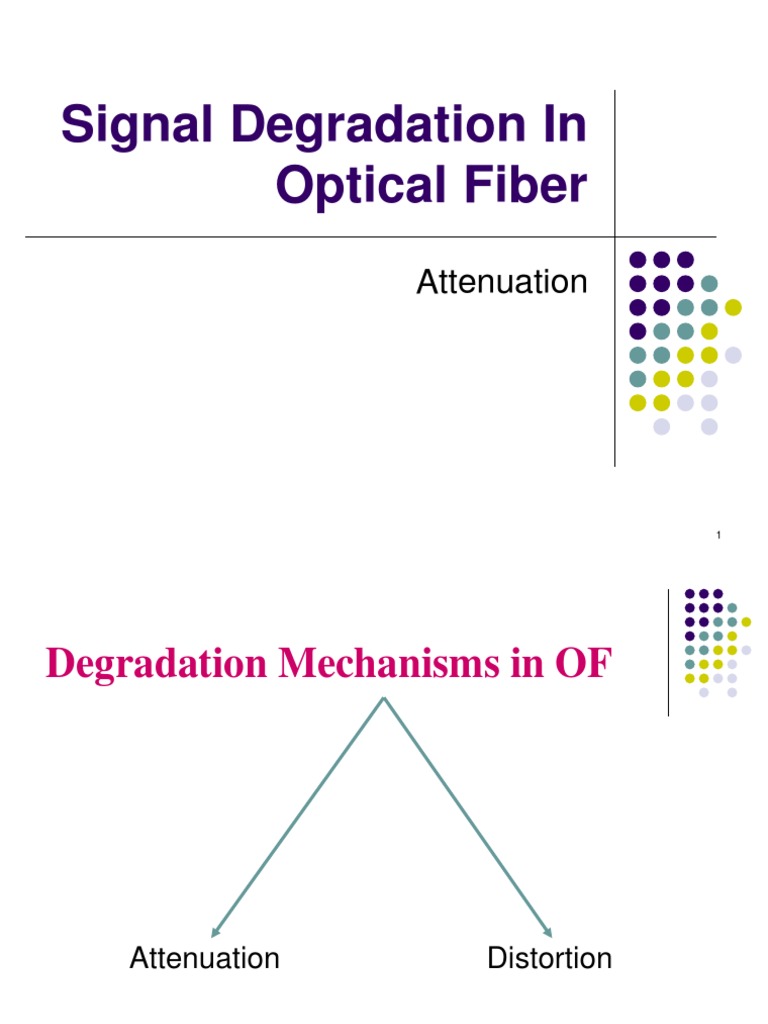In the realm of optical communication, the phenomenon of signal attenuation serves as both a challenge and a conundrum, akin to the quiet thief that stealthily robs a message of its integrity as it traverses the fibers of a cable. This intricate process, where the light signals diminish in intensity over distance, can be attributed to multiple factors that intertwine physics with practical limitations. Herein, we shall explore and elucidate the intricate causes of signal attenuation in optical cables.
To understand the undercurrents of attenuation, it is essential to first delineate its principal causes: inherent material properties, scattering effects, absorption mechanisms, and external influences. Each of these factors contributes in unique ways, akin to an orchestra where each instrument enhances the overall symphony of signal loss.
1. Material Properties
The foundational architecture of optical fibers is crucial in determining their susceptibility to attenuation. Commonly, optical fibers are constructed from silica due to its favorable optical properties. However, impurities within the silica—such as water molecules or metallic ions—can disrupt the clarity of the transmitted light, much like murky water obscuring a pristine view. The purity of the glass is paramount; even minute impurities can lead to significant losses during transmission. This is often measured in terms of dB/km, providing a quantifiable means to appreciate how material imperfections affect signal strength.
Moreover, the refractive index of the fiber material plays a pivotal role. Variations in refractive index, whether due to material composition or fiber construction, can lead to modal dispersion, wherein different light modes travel at divergent velocities. This variation in speed manifests itself as a broadening of the signal pulse over distances, consequently increasing the likelihood of signal degradation.
2. Scattering Mechanisms
Light traveling through optical fibers is subject to two primary scattering mechanisms: Rayleigh scattering and Mie scattering. Rayleigh scattering, named after the eminent physicist Lord Rayleigh, results from microscopic variations in the density of the fiber material. As light waves encounter these fluctuations, they scatter in multiple directions, leading to a loss of intensity. The extent of Rayleigh scattering increases with decreasing wavelength, which implies that shorter wavelengths will suffer greater losses—a critical factor in the design and selection of wavelengths for optical transmission.
Mie scattering, on the other hand, is predominantly influenced by larger particles present within the fiber. Unlike Rayleigh scattering which diminishes for larger particles, Mie scattering remains relatively constant and can significantly impact performance, particularly at wavelengths where particle sizes approach the wavelength of light. The interplay between these scattering phenomena forms a complex web, affecting overall signal quality.
3. Absorption Losses
The absorption of light within optical fibers represents another pivotal contributor to signal attenuation. Absorption occurs when the energy of the light photons is converted into heat due to interactions with the material of the fiber. This phenomenon can arise from several mechanisms, including electronic absorption and vibrational absorption. The former pertains to the excitation of electrons within the glass matrix, while the latter involves interactions with vibrational modes of the molecular structure.
The absorption loss is significantly influenced by wavelength. Infrared wavelengths, commonly utilized in telecommunications, may encounter greater absorption than visible light. It is essential for engineers to judiciously select operational wavelengths that minimize absorption losses. The theoretical understanding of absorption mechanisms can be likened to recognizing the various hurdles in a marathon—only through preparation can one hope to mitigate their impacts.
4. External Influences
Crucially, not all factors influencing signal attenuation are internal. External environmental aspects, such as temperature fluctuations, physical stress, and microbending effects, can greatly affect performance. Temperature changes can induce thermal expansion, potentially leading to microcracks and imperfections in the fiber structure. Microbending, caused by pressure points along the fiber—whether through improper installation or external mechanical forces—can also introduce localized attenuation, further complicating the signal’s journey.
The presence of moisture or even humidity can also engender losses, as water absorption can alter refractive indices and intensify scattering effects. Consequently, the deployment environment of optical cables must be meticulously considered, mirroring the careful selection of a garden’s location to optimize sunlight and growth.
Conclusion
Signal attenuation in optical fibers embodies a multifaceted interplay of physical principles, material characteristics, and external conditions. Each element—whether it be the purity of materials, the scattering phenomena, the mechanisms of absorption, or environmental influences—contributes to the overarching narrative of light propagation. In the intricate dance of photons through optical cables, understanding these factors cultivates a profound appreciation for the delicate balance required to preserve signal integrity.
As technology continues to evolve, the pursuit of innovative materials and refined communication strategies will undoubtedly amplify the fight against signal attenuation. Thus, akin to the relentless pursuit of knowledge in all sciences, addressing the complexities of signal loss remains a pivotal endeavor in the enhancement of optical communications, promising a future where clarity reigns supreme amidst the shadows of attenuation.








